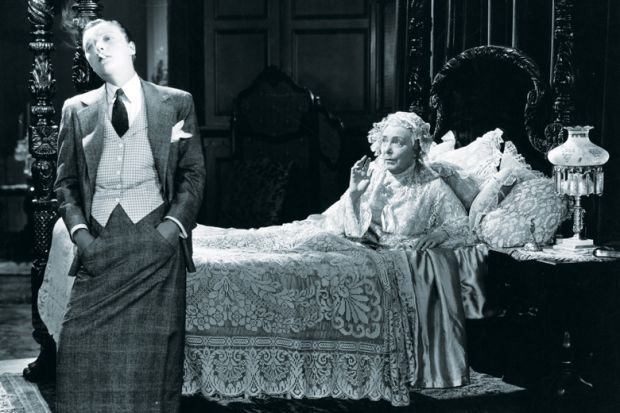How are lesbians represented on-screen? “Lesbian chic” has long been one of the three dominant trends in their cinematic depiction, as in Todd Haynes’ recent Carol, with glamorous women titillating viewers. The other two are erasure, often the death of a lesbian as covert punishment for sexual and social transgressions, as in Lisa Cholodenko’s High Art, and monstrosity, linked to anti-normativity – especially female masculinity – as seen in Charlize Theron’s role in Monster. Some works, particularly vampire tales such as The Hunger, combine all three.
Recently, however, I have noticed a trend of normalising the lesbian on-screen, mirroring recent socio-political changes for gay subjects such as marriage and parental and financial rights, which centre on the family, with The Kids Are Alright (2010) and Freeheld (2015) good examples.
These changes relating to sexuality and gender, on-screen and off, make Laura Horak’s book – which looks back to cross-dressing and lesbianism in American films in the early 20th century – fascinating and timely.
Scouring film archives in North America and Europe, Horak uncovered 476 titles featuring cross-dressed women and viewed nearly every surviving example, some 200 in all. Much of what she finds is far from the “monstrous butch” archetype; instead, cross-dressed women were frequently presented as American ideals, such as the female boy – borrowed from theatre – which offered a vision of delicate boyhood in an era when film aimed to appeal across social classes and establish itself as a high art form. The female boy also offered a temporary escape from middle-class femininity, Horak adds, while supporting “white supremacist, heterosexual American national mythology”, particularly in westerns about young white women masquerading as boys to work at the frontier. Two of the examples she cites, both dating to 1911, are Billy the Kid, about a ranch girl raised as a boy who marries a male ranch hand, and The Argonauts, featuring a female boy who falls for a man while travelling to California.
A real highlight is the book’s focus on the iconic figures of Marlene Dietrich and Greta Garbo, with glimpses into their private lives interwoven with their charismatic cross-dressing in films such as Morocco (1930) and Queen Christina (1933). Shortly after the release of these films, Horak shows, the rise of the Hollywood star system and its preference for femininity meant that female cross-dressing dwindled.
Scholars typically read cross-dressed women as “mirrors of their own concerns and identities”, Horak laments, whether feminist, gender variant or lesbian. Although I would have liked to have seen much more theoretical engagement, she argues against the work of some established LGBTQ scholars: Vito Russo, who lovingly searched the celluloid closet for traces of homosexuality; Marjorie Garber, who claimed that cross-dressing enacts “not just a category crisis of male and female, but the crisis of category itself”; and Chris Straayer, who contended that cross-gender casting undermines the dominant gender system. Instead, Horak analyses examples of cross-dressing as wholesome or transgressive, situating each within the context of contemporaneous cultural output and socio-political reality.
To emphasise that female cross-dressing on-screen has never meant only one thing, in the book’s second half Horak examines it in relation to the emergence of lesbian visibility, tied to sexologists’ theories of the cross-dressed sexual invert. As the lesbian subject is being normalised in Hollywood and far beyond, this study of cross-dressing’s early filmic transition from heterosexual ideal to queer deviance is particularly valuable.
Leanne Dawson is lecturer in film and German studies, University of Edinburgh, and co-organiser of the Scottish Queer International Film Festival.
Girls Will Be Boys: Cross‑Dressed Women, Lesbians, and American Cinema, 1908-1934
By Laura Horak
Rutgers University Press, 256pp, £90.95 and £30.50
ISBN 9780813574837, 4820 and 4851 (e-book)
Published 28 February 2016
Register to continue
Why register?
- Registration is free and only takes a moment
- Once registered, you can read 3 articles a month
- Sign up for our newsletter
Subscribe
Or subscribe for unlimited access to:
- Unlimited access to news, views, insights & reviews
- Digital editions
- Digital access to THE’s university and college rankings analysis
Already registered or a current subscriber?




